
The Jamestown settlement in the Colony of Virginia was the first permanent English settlement in the Americas. It was located on the northeast bank of the James (Powhatan) River about 2.5 mi (4 km) southwest of the center of modern Williamsburg. It was established by the Virginia Company of London as "James Fort" on May 4, 1607 O.S., and was considered permanent after a brief abandonment in 1610. It followed several failed attempts, including the Lost Colony of Roanoke, established in 1585 on Roanoke Island, later part of North Carolina. Jamestown served as the colonial capital from 1616 until 1699. Despite the dispatch of more settlers and supplies, including the 1608 arrival of eight Polish and German colonists and the first two European women, more than 80 percent of the colonists died in 1609–10, mostly from starvation and disease. In mid-1610, the survivors abandoned Jamestown, though they returned after meeting a resupply convoy in the James River.
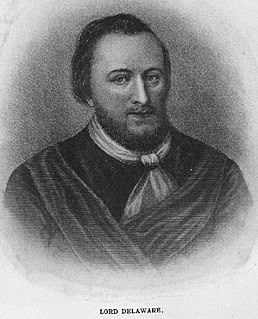
Thomas West, 3rd Baron De La Warr, was an English merchant and politician, for whom the bay, the river, and, consequently, a Native American people and U.S. state, all later called "Delaware", were named. He was a member of the House of Lords from the death of his father in 1602 until his own death in 1618.
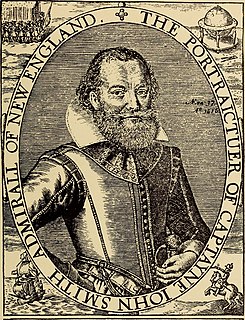
John Smith was an English soldier, explorer, colonial governor, Admiral of New England, and author. He played an important role in the establishment of the colony at Jamestown, Virginia, the first permanent English settlement in America, in the early 17th century. He was a leader of the Virginia Colony between September 1608 and August 1609, and he led an exploration along the rivers of Virginia and the Chesapeake Bay, during which he became the first English explorer to map the Chesapeake Bay area. Later, he explored and mapped the coast of New England. He was knighted for his services to Sigismund Báthory, Prince of Transylvania, and his friend Mózes Székely.

Pocahontas was a Native American woman, belonging to the Powhatan people, notable for her association with the colonial settlement at Jamestown, Virginia. She was the daughter of Powhatan, the paramount chief of a network of tributary tribes in the Tsenacommacah, encompassing the Tidewater region of Virginia.
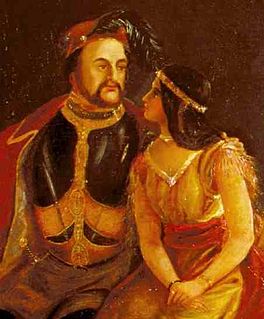
John Rolfe was one of the early English colonizers of North America. He is credited with the first successful cultivation of tobacco as an export crop in the Colony of Virginia in 1611.
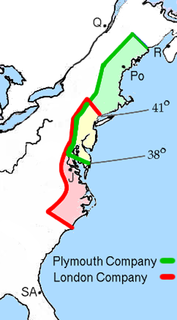
The Popham Colony—also known as the Sagadahoc Colony—was a short-lived English colonial settlement in North America. It was established in 1607 by the proprietary Plymouth Company and was located in the present-day town of Phippsburg, Maine, near the mouth of the Kennebec River. It was founded a few months after its more successful rival, the colony at Jamestown. That colony was established on May 4, 1607 by the London Company in present-day James City County, Virginia.
Sir George Yeardley (1587–1627) was a planter and colonial governor of the colony of Virginia. He was also among the first slaveowners in Colonial America. A survivor of the Virginia Company of London's ill-fated Third Supply Mission, whose flagship, the Sea Venture, was shipwrecked on Bermuda for ten months from 1609 to 1610, he is best remembered for presiding over the initial session of the first representative legislative body in Virginia in 1619. With representatives from throughout the settled portion of the colony, the group became known as the House of Burgesses. It has met continuously since, and is known in modern times as the Virginia General Assembly. Yeardley died in 1627.
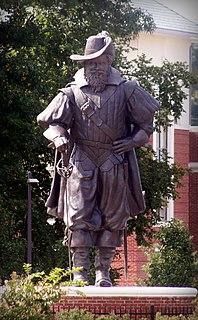
Christopher Newport (1561–1617) was an English seaman and privateer. He is best known as the captain of the Susan Constant, the largest of three ships which carried settlers for the Virginia Company in 1607 on the way to found the settlement at Jamestown in the Virginia Colony, which became the first permanent English settlement in North America. He was also in overall command of the other two ships on that initial voyage, in order of their size, the Godspeed and the Discovery.

Sea Venture was a seventeenth-century English sailing ship, part of the Third Supply mission to the Jamestown Colony, that was wrecked in Bermuda in 1609. She was the 300 ton purpose-built flagship of the London Company and a highly unusual vessel for her day, given that she was the first single timbered merchantman built in England, and also the first dedicated emigration ship. Sea Venture's wreck is widely thought to have been the inspiration for William Shakespeare's play The Tempest.
The Jamestown supply missions were a series of fleets from 1607 to around 1611 that were dispatched from England by the London Company with the specific goal of initially establishing the Company's presence and later specifically maintaining the English settlement of "James Fort" on present-day Jamestown Island. The supply missions also resulted in the colonization of Bermuda as a supply and way-point between the colony and England.
Captain Raleigh Croshaw or Crashaw was an English merchant and early immigrant to the Colony and Dominion of Virginia who represented Elizabeth City County in the House of Burgesses in 1624.
The Starving Time at Jamestown in the Colony of Virginia was a period of starvation during the winter of 1609–1610. There were about 500 Jamestown residents at the beginning of the winter. However, there were only 61 people still alive when the spring arrived.
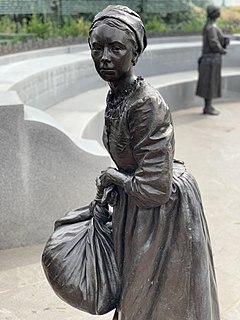
Anne Burras was an early English settler in Virginia and an Ancient Planter. She was the first English woman to marry in the New World, and her daughter Virginia Laydon was the first child of English colonists to be born in the Jamestown colony. Anne Burras arrived in Jamestown on September 30, 1608, on the Mary and Margaret, the ship bringing the Second Supply. She came as a 14-year-old maid to Mrs. Thomas Forrest. In November or December 1608, Anne married John Laydon/Layton/Leyden. The Laydons had four daughters, Virginia, Alice, Katherine, and Margaret. All six members of the Laydon family were listed in the muster of February 1624/5. According to the muster, Anne was 30 years of age when the muster was taken. All four children are listed as born in Virginia; their ages are not given.

The Generall Historie of Virginia, New-England, and the Summer Isles is a book written by Captain John Smith, first published in 1629. The book is one of the earliest, if not the earliest, histories of the territory administered by the London Company.

Jamestown, also Jamestowne, was the first settlement of the Virginia Colony, founded in 1607, and served as the capital of Virginia until 1699, when the seat of government was moved to Williamsburg. This article covers the history of the fort and town at Jamestown proper, as well as colony-wide trends resulting from and affecting the town during the time period in which it was the colonial capital of Virginia.
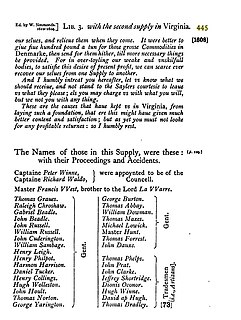
Thomas Forrest, Esq, also known as Thomas Forrest, Gentleman, in the Jamestown Colonists historic lists, was a gentleman financier in the Virginia Company. At that time, "gentleman" denoted a man of the lowest rank of the English gentry, standing below an esquire and above a yeoman. By definition, this category included the younger sons of the younger sons of peers, knights, and esquires in perpetual succession; thus the term captures the common denominator of gentility shared by both constituents of the English aristocracy: the peerage and the gentry.
Reverend Richard Buck was a minister to the Colony of Virginia at Jamestown, Virginia from 1610 to 1624. He was chaplain of the first session of the Virginia General Assembly, which was composed of the House of Burgesses and the Virginia Governor's Council. This assembly met in the church at Jamestown on July 30, 1619, as the first elected assembly and law making body in colonial America.
William Spence was an early Virginia colonist on Jamestown Island. He was member of the first assembly of the Virginia House of Burgesses in Jamestown, Virginia in 1619. Spence became an ensign in the local militia and is thus sometimes identified as Ensign William Spence or Ensign Spence. He was an early farmer on Jamestown Island, a tobacco taster and landowner at Archer's Hope. He, his wife and his young daughter, Sara, or Sarah, avoided the Indian massacre of 1622, but Spence and his wife were reported "lost" at the census of February 16, 1624.












